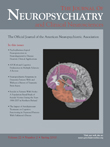Non-Convulsive Status Epilepticus Presenting as Recurrent Hypersomnia
To the Editor: In most of the literature of Kleine-Levin syndrome, epileptiform activity in the EEG has been rarely described and is considered to be of no clinical significance. The EEG activities reported include isolated spike discharges, 1 self-limited photoparoxysmal response 2 and sharp waves. 3
We describe a patient presenting with recurrent hypersomnia suggestive of Kleine-Levin syndrome who was subsequently diagnosed as having complex partial seizure.
Case Report
A 13-year-old boy presented with a 4-year history of recurrent episodes of hypersomnolence. Exploration of history revealed that onset of the sleep episodes was immediately preceded by low-grade fever. The first sleep episode was characterized by an irresistible urge to sleep, and when family members tried to keep him awake, he was irritable and wept like a small child. The first episode of sleep lasted for 18 hours during which he woke up for urinating and passing stools and in between also consumed sugar rich confectionaries in large quantities.
Over the next 2 months the patient had three more similar episodes, each lasting for 5–7 days. During these episodes he also exhibited intermittent focal clonic movements of limbs, lip smacking, tongue protrusion, and blinking eye movements lasting for a few minutes. The patient had complete amnesia of the episodes. After the fourth episode, he was treated with clobazam, 10 mg/day, with which the patient remained asymptomatic for 2 years. Although he continued to take the medication, the patient had a relapse of symptoms. Over the next 2 years, the patient continued to have similar episodes (six such episodes), each lasting for 8–15 days. During the interepisodic period, he appeared to be healthy except for a decline in scholastic performance.
The patient’s EEG revealed widely generalizing spike and slow-wave complexes with right temporal lobe preponderance while the patient was experiencing a strong urge to sleep along with intermittent clonic movements. Video EEG revealed generalized epileptiform discharges followed by diffuse slowing.
With the above clinical picture and investigation findings, the patient was diagnosed with complex partial seizure and was treated with carbamazepine, 600 mg/day, and clobazam, 10 mg/day, with which the symptoms disappeared. A video EEG performed after the resolution of symptoms showed interictal record.
Later, he had one similar episode, during which the repeat EEG again showed generalizing spike and slow-wave complexes. Following this, levetiracetam, 1,000 mg/day, was added to the previous regimen.
Discussion
Our patient presented with an illness that was apparently precipitated by fever and was characterized by episodes of hypersomnolence, hyperphagia, and irritability followed by amnesia for the episode. Clinically, these episodes were suggestive of Kleine-Levin syndrome. 4 , 5 However, investigations revealed the presence and resolution of complex partial seizure that was effectively treated with antiepileptics and was associated with the amelioration of the symptoms of Kleine-Levin syndrome.
Though complex partial seizure is known to have protean manifestations, to the best of our knowledge, complex partial seizure presenting with Kleine-Levin syndrome-like symptoms has not been reported before. On the other hand, though nonspecific EEG changes are common in Kleine-Levin syndrome, epileptiform activity is conspicuous by its absence in reported cases. 4
Our case thus represents a rare finding of the association of Kleine-Levin syndrome-like symptoms and complex partial seizure. This case also demonstrates the importance of getting an EEG done in all cases of Kleine-Levin syndrome.
1. Elian M: Periodic hypersomnia. Electroencephalogr Clin Neurophysiol 1968; 24:192–193Google Scholar
2. Papacostas SS: Photosensitivity during hypersomnic phase in a patient with Kleine-Levin syndrome. J Child Neurol 2003; 18:432–433Google Scholar
3. Malhotra S, Das MK, Gupta N, et al: A clinical study of Kleine-Levin syndrome with evidence for hypothalamic-pituitary axis dysfunction. Biol Psychiatry 1997; 42:299–301Google Scholar
4. Arnulf I, Zeitzer JM, File J, et al: Kleine-Levin syndrome: a systematic review of 186 cases in literature. Brain 2005; 128:2763–2776Google Scholar
5. American Academy of Sleep Medicine: The International Classification of Sleep Disorders—Revised. Chicago, American Academy of Sleep Medicine, 2005Google Scholar



